Minato Ward is a fierce battleground for international schools. This spring, the elementary school of Capital Tokyo International School (CTIS), led by Takahiro Sato, founder of LITALICO Corporation, opened in Minato-ku.
The school has also announced plans to open a kindergarten and middle school in April 2023 and a high school in April 2027.
Our editorial team visited the newly opened CTIS and talked to Mr. Joshua Oyo, COO, about the school!
International School as Startup
CTIS is an international school whose mission is to provide distinctive and practical knowledge. Focusing on the ability to actually “apply” knowledge in a rapidly changing society, CTIS has four distinctive features.
【Features of CTIS】
- PBL (Practical-Based Learning)
- STEAM (Science, Technology, Engineering, Arts, and Mathematics)
- International Baccalaureate Curriculum (application for PYP candidacy in 2022)
- Trilinguallanguage acquisition (English, Japanese, and Mandarin)
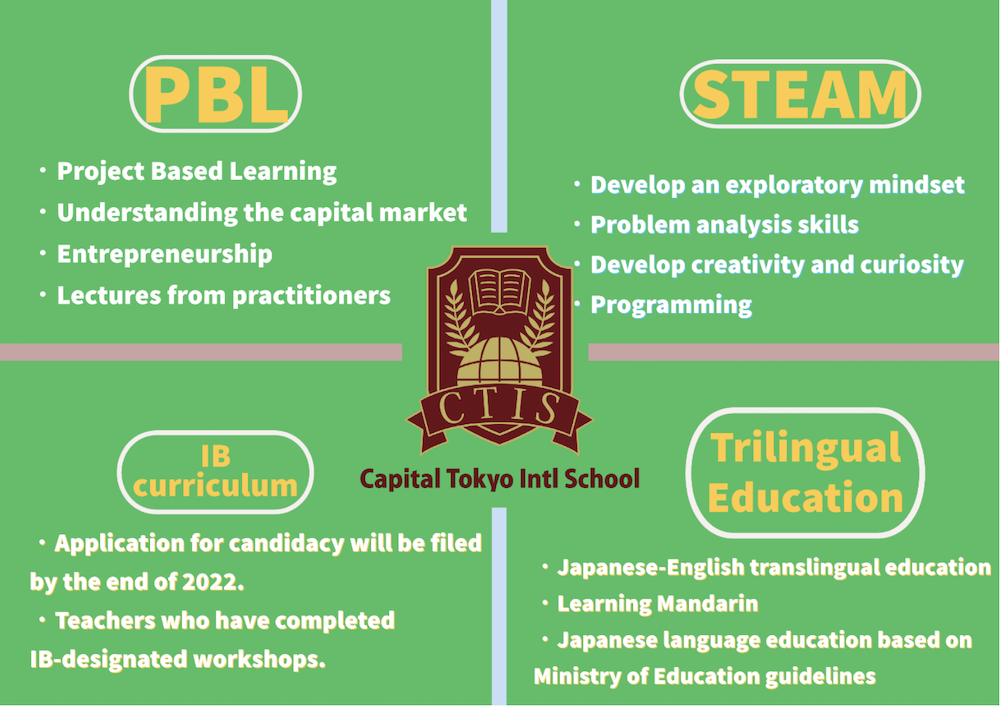
CTIS aims to foster problem-solving learning, which can be used in everyday society, and practical education connected to PBL. Simultaneously our STEAM curriculum is leavage with practical PBL, promoting synergy between the two class types. The results are highly effective learning experiences for CTIS students that are also practical in application.
An important aspect of practical PBL is that it is taught in small classroom environments by faculty members with acute business sense and by practitioners who are currently active in the business world,.The teacher-student ratio at CTIS is targeted to be 1:10.


The tuition is cost-effective!
Some people may imagine that the small teacher-student ratio of 1:10, combined with the IB curriculum, trilingual education in Japanese, English, and Chinese, and practical PBL education would lead to high tuition fees.
However, the tuition at CTIS is very reasonable when compared to most international schools. We are not only promoting a cosmopolitan environment and equality in terms of learning, but also in terms of tuition.

Parents often ask us how we are able to offer such high quality classes and operate the school at such low tuition rates, and this is largely due to our founder, Mr. Sato.
In addition to being the founder of LITALICO, Sato is also an angel investor. He has invested in about 40 startups at this time, and with the practical resources of his many portfolio companies, he is able to provide CTIS students with hands-on learning opportunities while keeping tuition cost low.
Among the unique classes offered by CTIS will be a class on FinTech taught by a partner at Anderson Mori & Tomotsune / New York State attorney, a class on accounting taught by a CPA, and visits to high-profile start-up companies, which are not available to ordinary schools and which even adults would be willing to pay to attend.
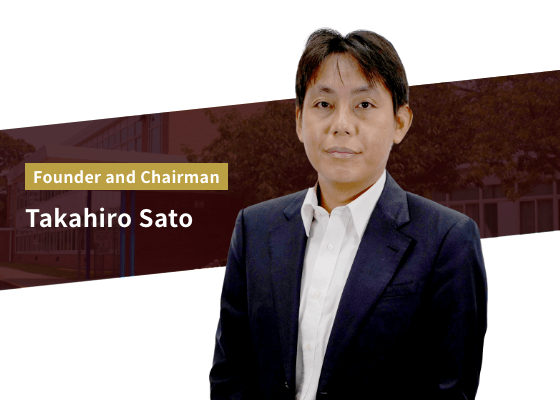
While attending university, Mr. Sato commercialized facilities for the disabled and nursing homes for the elderly. Later as a new graduate, he was appointed as a section manager of the Nagano prefectural office and then, at the age of 24, became a director of the prefectural office. After departing the prefectural office, he founded LITALICO Inc. (a publicly listed company on the First Section of the Tokyo Stock Exchange), which provides employment support and assistance for people who have difficulty finding employment, becoming the elected representative director for the company. Subsequently, he retired from LITALICO in order to run for the mayor of Sendai. Currently, Mr. Sato is a serial entrepreneur with his company SEKAISHA and oversees a medical corporation group, as well as recently founding the CTIS corporation. As an angel investor, Mr. Sato supports about 40 start-up companies in the entertainment business such as movies and is participating in the establishment of companies researching and developing pharmaceuticals. He is also supporting the education of children, our future leaders of tomorrow, by establishing an incorporated education foundation.
A refined campus with minimal under utilized space
The CTIS campus may appear compact at first glance, with only two floors in a building in Minami-Azabu, but we have thoroughly cut down on unused space to create efficient and flexible school areas.
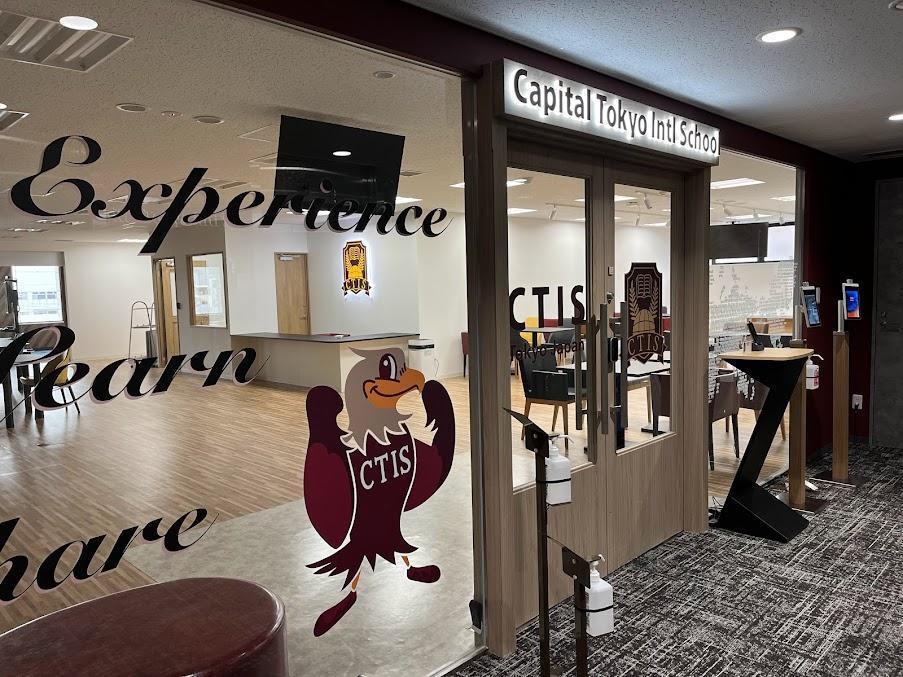

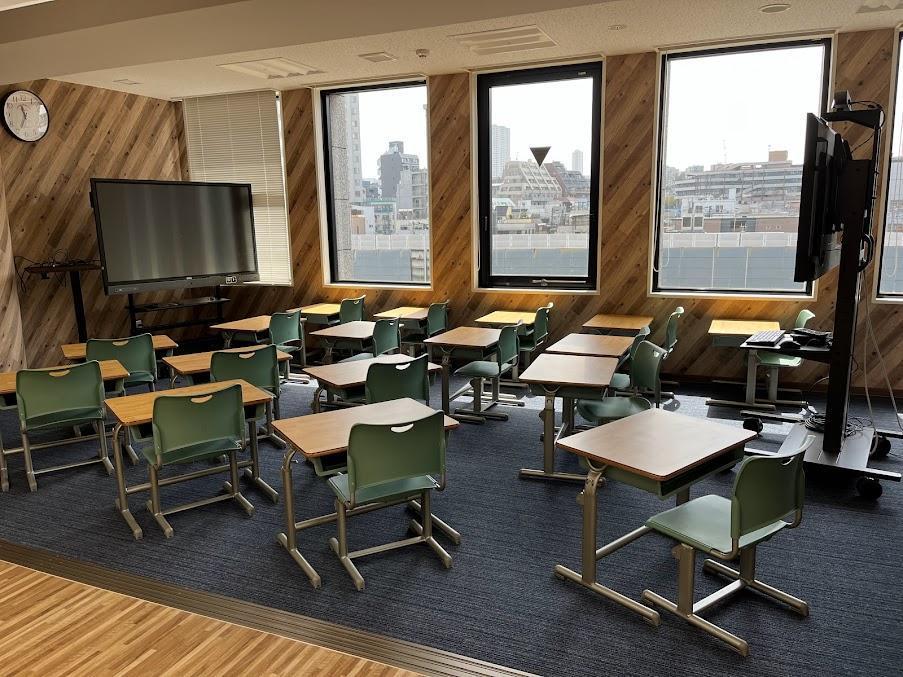
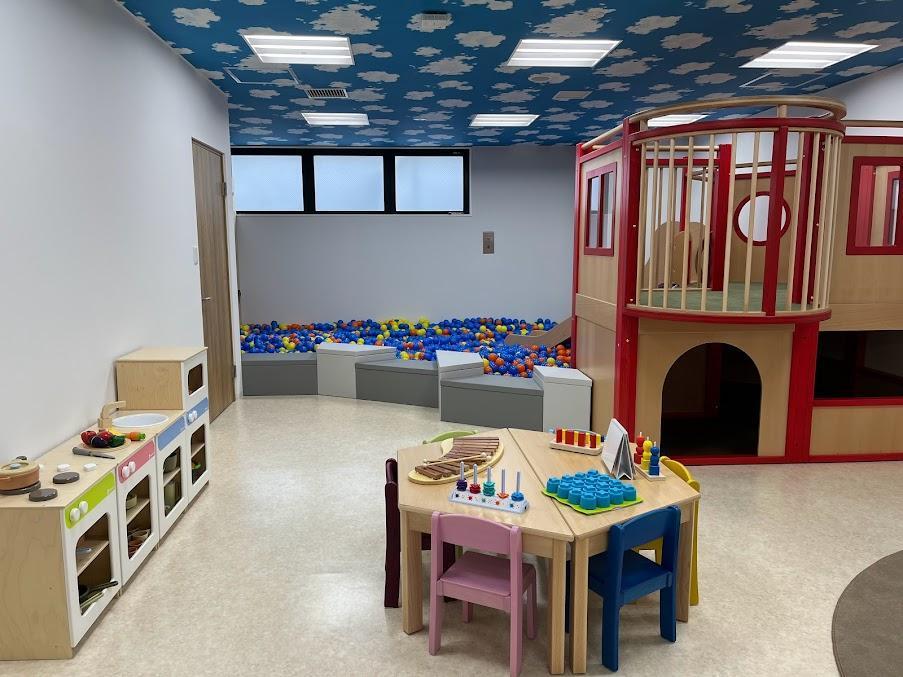


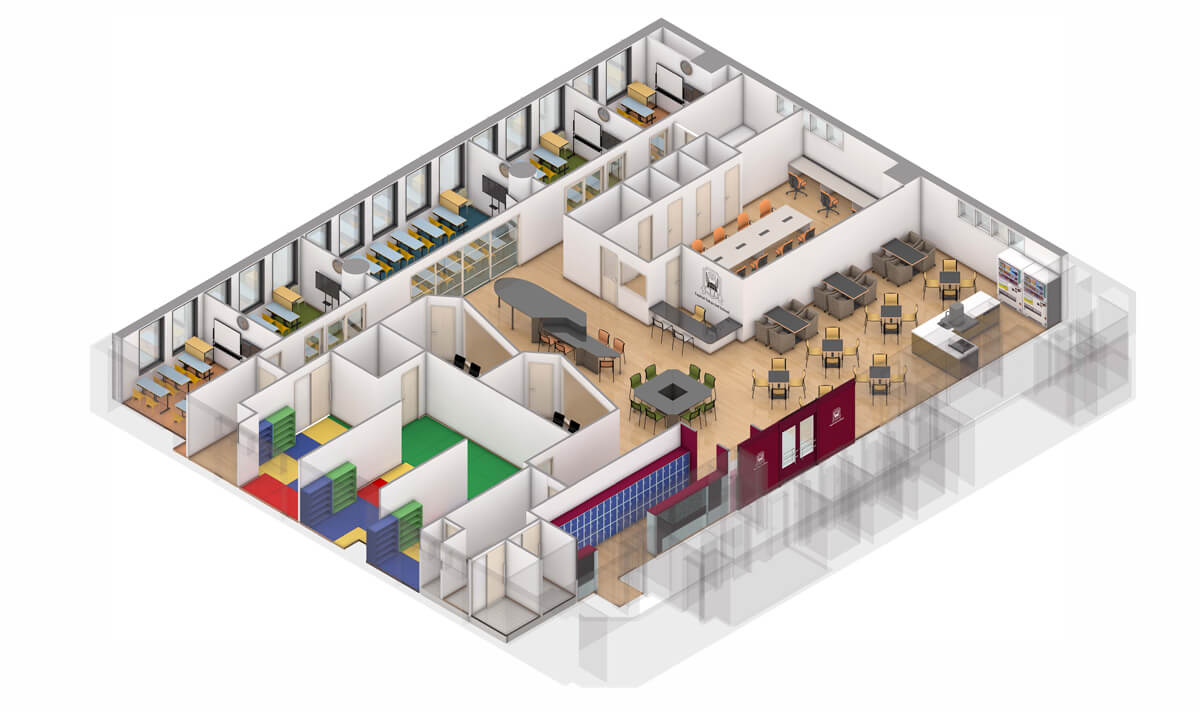
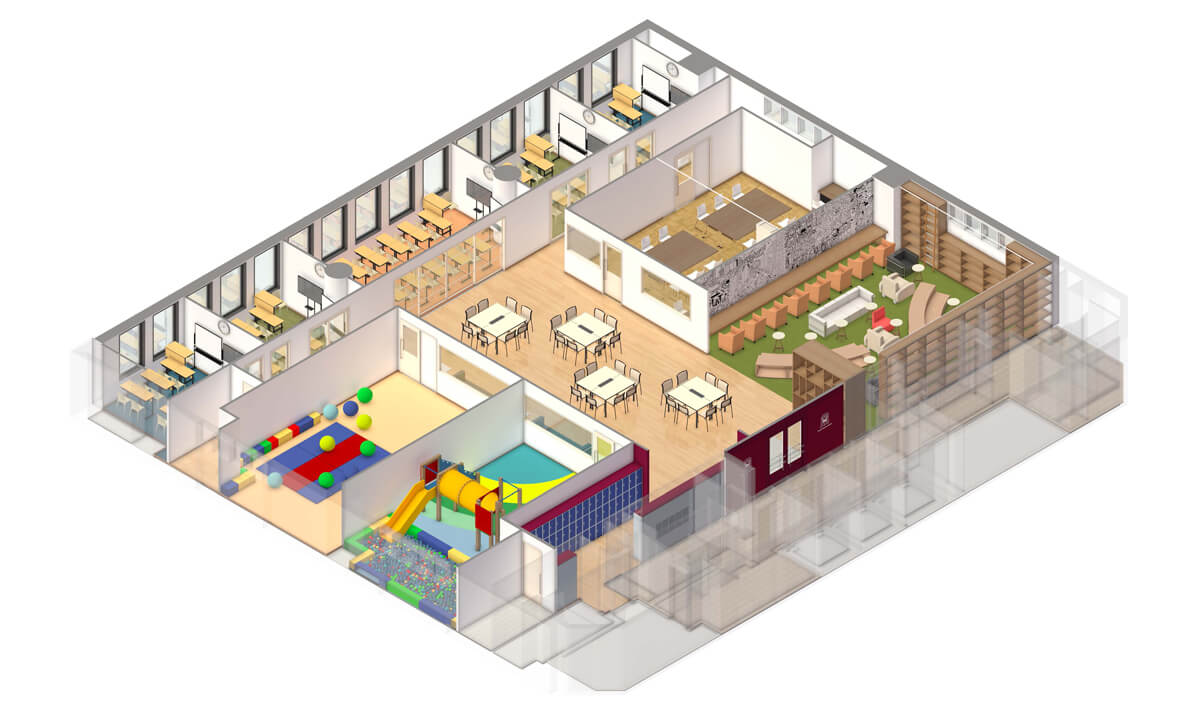
CTIS strives for efficiency, but at the same time, we do not forget about the high quality of everything we offer. For example, I (Mr.Oyo) personally went out and took great care in the selection of the furniture, books, and toys at CTISwhile also paying close attention to specific details, ensuring that CTIS had the best products and materials.
For furniture, we held meetings with various domestic manufacturers, communicated our campus image in detail, and had the furniture custom-made specifically for CTIS For books, we invested more than 10 million yen for a collection of 5,000 popular titles in English and Japanese. All toys were made by a specialized German manufacturer on behalf of the Bornelund company We wanted to make sure that everything CTIS offers children was state-of-the-art and of the highest quality.
Pursuing efficiency but not forgetting hospitality
CTIS provides laptops, Microsoft Office software, and cloud school space from the first grade of elementary school, and strives for paperless classroom.
We want our school students to be able to use digital devices and creative tools as well as learn from knowledgable working professionals, therefore the IT literacy of the instructors and administrative staff at CTIS who support students is very high.
Schools in general have an ingrained preferences for paper with lots of inefficiencies, such as letters from the school, but CTIS avoids this issue.
The same is true with regard to the countermeasures against the COVID-19 in terms of the absence of unreasonableness due to inefficiency: at CTIS, only the administrative staff are obliged to wear masks. Teachers and students take their temperature at the entrance and if their temperature is below 37.5 degrees Celsius, then they come to school and switch to wearing face shields. CTIS prefers face shield due to the fact that teachers need to see students mouths when teaching them an additional language.
I (Mr.Oyo) studied public health, etc. at Toho University Graduate School of Medicine, and CTIS pays more attention than others to the prevention of COVID-19 infection. The school is lavishly equipped with the latest virus elimination equipment air purifiers called Airdog, and is well-equipped with additional air purifiers and disinfectant solutions, with classrooms being regularly ventilated.
Therefore, CTIS does not cancel school events or classes without adaquate factsbased on medical evidence. CTIStakes thorough measures to prevent COVID-19 in the school.
We are also very conscious of our hospitality to parents, but not only in pursuit of efficiency. For example, parents at long-established interntional schoolsare expected to be fluent in English, and communication with the school is often clerical and inorganic, but not at CTIS.
We do not require parents to speak any English. We want parents to speak to us in English, Japanese, Chinese, or whatever language they feel most comfortable communicating with the school staff about their current concerns and expectations for the future.
We value parents’ feelings about their children and their education. We are always ready to answer all questions, no matter how long the inquiry may be.
Many of the parents of CTIS are executives of publicly listed companies and business corporations, medical practitioners, famous restaurant owners, and other people with high social status and busy daily lives.
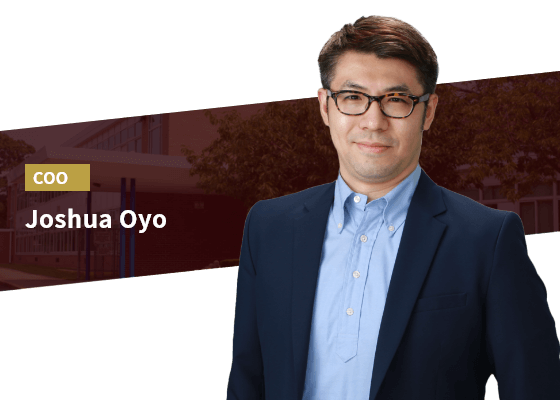
Mr. Oyo has a MBA degree from the Waseda University and a law degree from the Nanzan University, as well as an Certificate in Education for Technology from the Harvard Graduate School of Education (HGSE) and an Executive Certificate from the Cornell University Hotel School in the United States. Currently, Mr. Oyo is enrolled in the Minerva University in the Master of Science in Decision Analysis program. He’s now studying for his doctorate at the Graduate School of Medicine at Toho University.
I want to create a stir in Japan’s school education and deviation score supremacy.
I (Joshua) am currently studying in the MDA program at Minerva University and the doctoral program at Toho University Graduate School of Medicine,meanshile, I am working fulltime at CTIS.
I have studied and worked in many countries, and I think that the Japanese “school name worship” based on test scores is clearly a bad, archaic idea of Japanese society, and a relic from a prehistoric educational culture that does not fit in today’s global society.
Japanese entrance examinations are generally one-shot paper tests. For example, they do not ask students, “Please show us your value and why our school should accept you?” As long as a student achieves a passing score, they are accepted.
In Japan, junior high school entrance examinations are becoming increasingly high stakes and controversial , and many Japanese elementary school students are studying daily for the top testscore rankings announced by the cram school industry, aiming for a school with at least one strong brand name, without even considering the characteristics of the school.
And even after entering junior high school, students begin to double-school, this time at cram school and school to prepare for their future university entrance exam.
Students are expected to follow the rules and study materials given to them by their parents and cram schools, and to get into a university with a good name in the eyes of the public. At times, there are terrible fights between parents and children over the entrance examinations, causing cracks and faults within the family relationships
This is different from the examinations I have experienced. For example, in the AO examinations of Minerva and many Western universities, applicants are required to submit a Statement of Purpose (different from the so-called “statement of purpose”). In addition, they are given a specific theme and asked to write a logical and creative essay on that theme. The next step is an interview in which you have to inform the school what you want to major in and what you want to use the school for, as well as demonstrate yourenthusiasm and values. Unfortunately, in Japan today, AO entrance examinations are considered as an easy route when compared to entrance examinations and are looked down upon as foolish. Even among students who entered the same university, those who entered through general entrance examinations are generally considered superior to those who entered through AO examinations.
In Western countries, people do not worship famous school names like the Japanese do. The name of the school is secondary. First of all, the major is important: what field the student is interested in and what he/she wants to accomplish. For example, the University of Texas at Austin is well known for accounting, MIT is known for computer science, Stanford for entrepreneurship,and you can see that the prestigious Harvard University is known as not the best in all areas of specialization.
Teachers and staff at overseas high schools decide which university is best from a whole picture perspective, considering globality, tuition fees, security of the location, and other factors among universities where students can study majors they are interested in.
This is different from private preparatory schools in Japan, where it is not “how many students did we let into the University of Tokyo this year? Education that respects students’ interests and hobbies is what is needed during the period of character development.
There is also a big difference between going abroad after college or graduate school and being exposed to non-Japanese culture and education from a much younger age. We want our students to be open-minded people who can look at things objectively, not being burdenedwith entrenched values.
Through daily classes taught by a school principal and teachers with a wealth of educational experience, we value the “WHY” of CTIS students and seek to nurture their ability to think and inquire.
We also encourage students to share their thoughts and opinions with each other, which will lead to deeper learning. In addition to classes, CTIS offers a variety of hands-on learning opportunities to foster students’ creativity through experiences of thinking, planning, and implementing ideas an example of student agency at CTIS.
We hope to create a stir in Japanese school education as an innovator as well as a novel international school created by Japanese people.
Editorial Summary
When I first entered the CTIS campus, I felt like I was in a dynamic start-up office in Silicon Valley. The office is compact but lean and sophisticated, and everyone is working freely and energetically.
When COO Joshua told me the founding story of the founder, Takahiro Sato, I was convinced that this is not a school or an international school framework, but one startup created by the school and parents.
This is a special place where students can efficiently learn what they need to know in society and learn practical lessons from professionals who are at the forefront of society. The Japanese education industry is going to be forced to change due to the presence of CTIS, which is always aware of what is going to happen in the next few years and efficiently accelerates innovation.
Access
Location:〒106-0047 Minami-Azabu building 4F & 5F, Minami-azabu4-11-30, Minato-ku, Tokyo
TEL: 03-6427-7133
Website: https://www.capitaltokyo.com/
【CTIS Official Youtube Channel】
https://www.youtube.com/channel/UCO5LwOXBD1DclL8QxPWFfFQ
【CTIS Official Instagram】
https://www.instagram.com/capitaltokyointlschool/?hl=ja
Copyright and Image:Capital Tokyo International School and Mr.Oyo and eduJUMP!
Writer: Kaori Takahashi (eduJUMP! Editorial Team)



